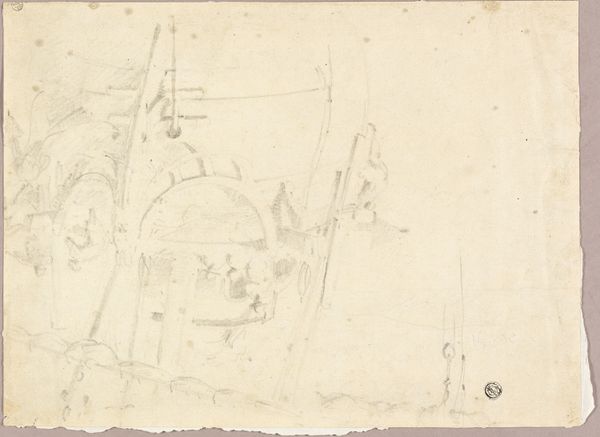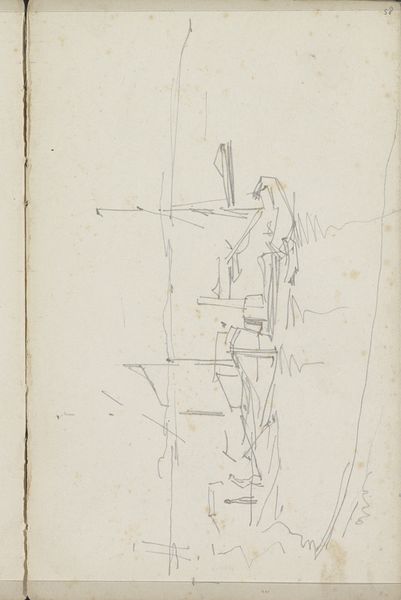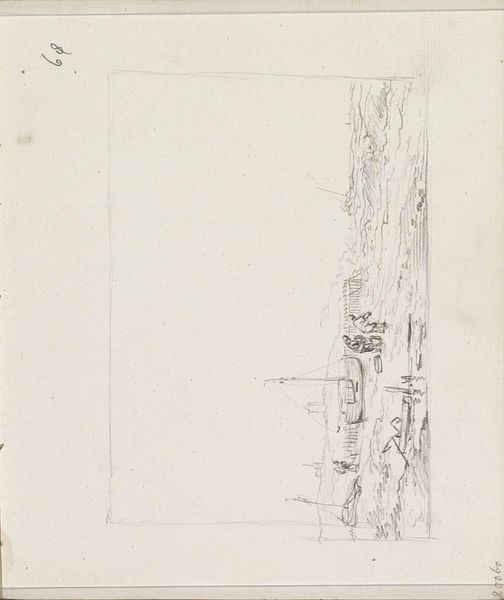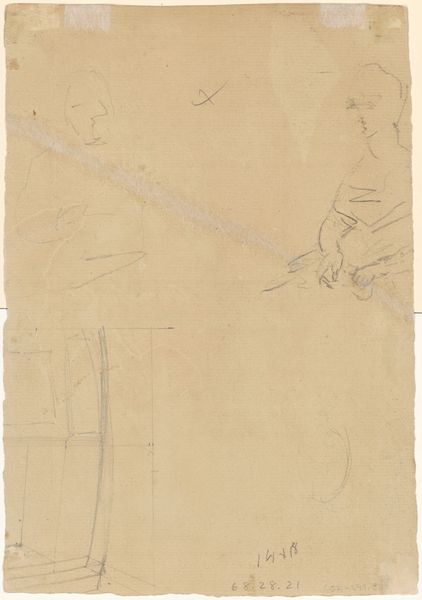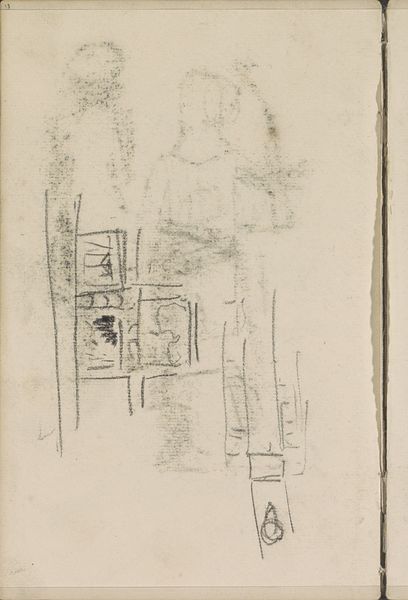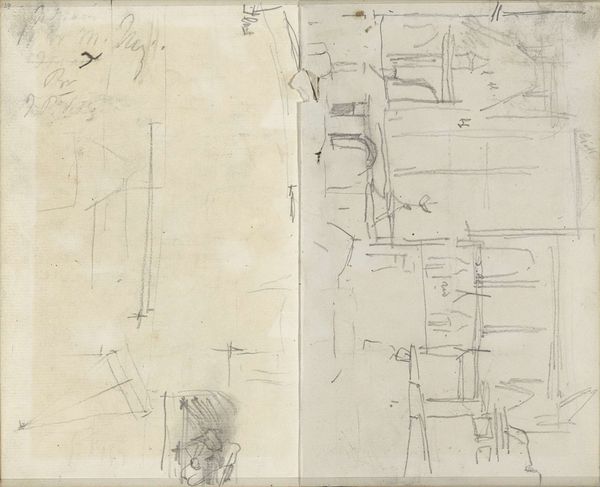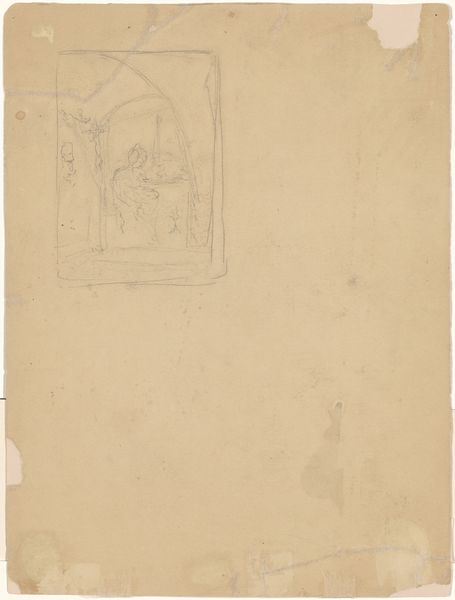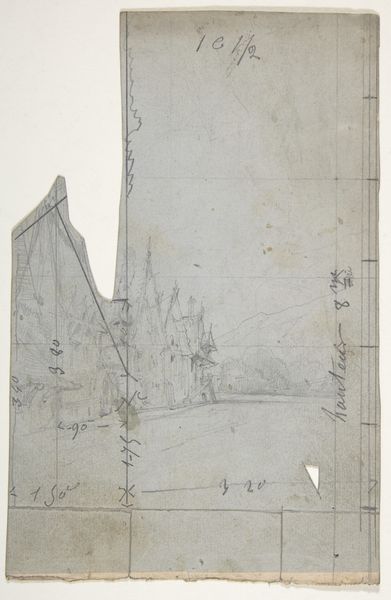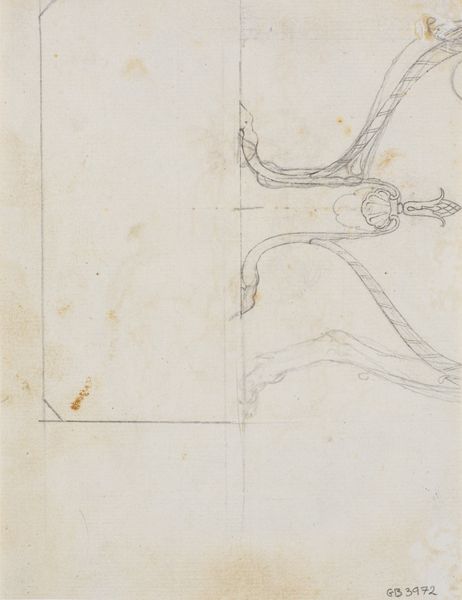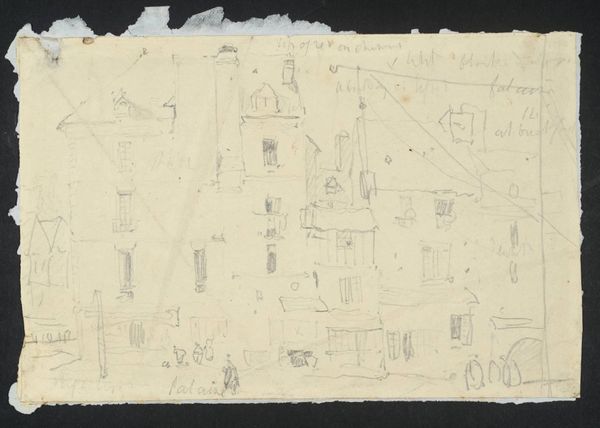
drawing, paper, pencil, architecture
#
drawing
#
landscape
#
figuration
#
paper
#
pencil
#
architecture
Copyright: Public Domain
Editor: Carl Werner's "Architektur- und figürliche Skizzen," dating from around 1829, uses pencil on paper to capture, well, a collection of sketches. The tentative, almost ephemeral quality of the pencil strokes gives it a fleeting, observational feel. What strikes you about this work? Curator: I find this drawing fascinating because it foregrounds the artistic process itself. It isn't about the finished product but about the labor of observation, the translation of the world into lines on paper. The pencil, the paper – these humble materials are the means through which Werner explores architectural forms and the human figure. Editor: So, the materiality of the piece becomes the focal point, almost more so than the subject? Curator: Exactly. Consider the societal implications: paper was becoming more accessible, allowing artists to experiment freely. The ease of use of a pencil allowed for quick and light capture. This piece, by existing in this state of impermanence, defies conventional distinctions between high art and mere preparatory sketch. Is this drawing an object of commodity? Or something else? Editor: It definitely seems more like a personal exploration, maybe a step towards a more defined piece. Curator: Perhaps. We might also see it as a study of power structures implicit in architectural design. The grandeur suggested by the architectural sketches is subtly undercut by the seemingly casual inclusion of human figures. Think of these built structures as tools, in that the structures we design become an extension of us and can impact those using or interacting with it. Editor: That’s an interesting angle. So the labor of the artist making these sketches and the implicit human labor within the architecture are intertwined? Curator: Precisely. Werner is documenting a material culture and asking us to consider the social relations embedded within it. It invites questions about skill and creation and ultimately the accessibility to that creation by varied social actors. Editor: I hadn't considered it that way before. Thanks, it’s definitely given me a new appreciation for sketches as finished works in their own right. Curator: It’s been a pleasure to share this perspective. Looking at the artistic production from this point has the power to expose greater understanding.
Comments
No comments
Be the first to comment and join the conversation on the ultimate creative platform.

